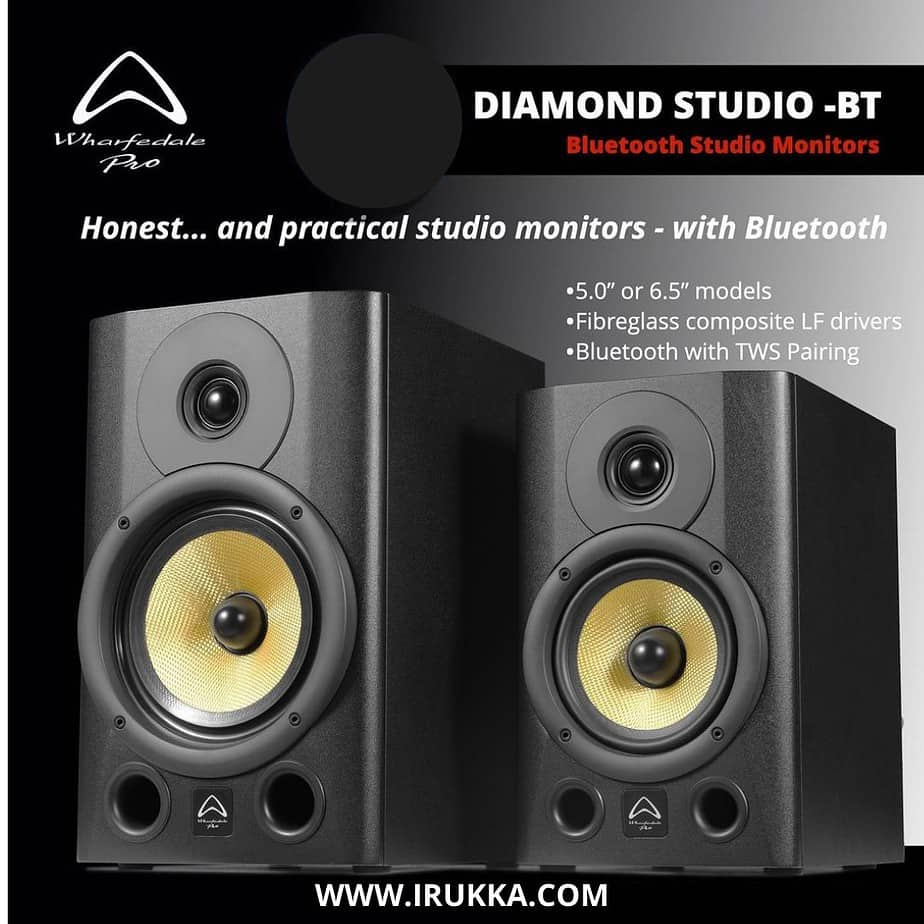Studio Monitor Vs. Speaker: What’s the difference?
Expert guide on the difference between Studio Monitor and Loudspeakers
Studio monitors and loudspeakers serve distinct purposes in the realm of audio playback, and they have key differences in terms of design, function, and application.
Studio Monitors:
- Precision and Accuracy: Studio monitors are specially designed speakers engineered for accuracy in audio reproduction. They aim to provide a true representation of the recorded sound without coloration or enhancement, making them crucial tools in music production and mixing.
- Near-Field Usage: They are typically used in a near-field configuration, meaning they are placed close to the listener or the mixing engineer. This minimizes the impact of room acoustics and allows the listener to hear the sound as it truly is.
- Flat Frequency Response: Studio monitors are designed to have a flat frequency response, which means they don’t emphasize any particular frequency range. This helps producers and engineers make precise judgments about the sound they’re working on.
- Compact Size: They are usually compact and designed to fit comfortably on a mixing console or a desktop.
Loudspeakers:
- General Audio Playback: Loudspeakers, often referred to simply as “speakers,” are designed for general audio playback in a variety of settings, including home entertainment, live events, and commercial spaces. They are not necessarily built for critical audio monitoring.
- Room-Filling Sound: Loudspeakers are designed to fill a room with sound and are typically used in a far-field configuration, where the listener is some distance away from the speakers. This design often includes features like enhanced bass response and projection.
- Sound Enhancement: Unlike studio monitors, which aim for neutrality, some loudspeakers are designed to enhance certain aspects of the audio, such as bass or treble, to cater to different preferences and room acoustics.
- Variety of Sizes: Loudspeakers come in various sizes and designs to suit different purposes, from small bookshelf speakers to large, powerful floor-standing models.
Studio Monitor Vs. Speaker: Can you tell the difference?
Studio Monitors:
- Purpose: Studio monitors, also known as studio speakers or reference monitors, are specifically designed for professional audio environments like recording studios, mixing studios, and post-production facilities. They are intended for critical listening and accurate audio reproduction.
- Sound Quality: Studio monitors are designed to produce a flat and neutral sound. This means they aim to reproduce audio without coloring or enhancing it in any way. They provide an accurate representation of the recorded sound, allowing engineers and producers to make precise adjustments during the mixing and mastering process.
- Frequency Response: Studio monitors typically have a wide and linear frequency response. This means they can accurately reproduce a broad range of frequencies without exaggerated bass or treble.
- Design: They often come in a two-way or three-way design with separate drivers for different frequency ranges (e.g., tweeters for high frequencies, and woofers for low frequencies). Studio monitors are usually designed to be placed at a specific angle and distance for optimal sound accuracy.
Regular Speakers:
- Purpose: Regular speakers, also known as consumer speakers or home speakers, are designed for general audio playback in homes, offices, or other non-professional settings. They are meant for casual listening and entertainment.
- Sound Quality: Regular speakers come in various types, such as bookshelf speakers, floor-standing speakers, or portable Bluetooth speakers. Their sound profiles can vary widely, but they are often designed to enhance the listening experience with features like boosted bass or accentuated treble. The goal is to make music sound pleasing to the average listener.
- Frequency Response: Consumer speakers may have a frequency response that is tailored to sound more appealing to the average listener’s preferences. This can result in a more colored or “colored” sound compared to studio monitors.
- Design: Consumer speakers come in a wide range of designs and sizes, and they are often optimized for aesthetics and integration into home décor. They may not have the same level of acoustic accuracy as studio monitors.
Enjoying Music in a Home or Entertainment Setting
In summary, the primary difference between studio monitors and loudspeakers lies in their intended use and design philosophy.
Studio monitors are precision tools for critical audio monitoring and production work, while PA Loudspeakers are more versatile and cater to various listening scenarios and preferences. The choice between them depends on your specific audio needs, whether it’s for professional music production or simply enjoying music in a home or entertainment setting.
In summary, the primary difference between studio monitors and regular speakers is their purpose and design philosophy. Studio monitors prioritize accuracy and neutrality for professional audio work, while regular speakers are designed for enjoyable listening experiences in various settings. Choosing between them depends on your specific needs and whether you require precise audio reproduction or prefer a more pleasing sound profile for everyday use.
What are Studio Monitors?
Studio monitors, also known as studio speakers or reference monitors.







